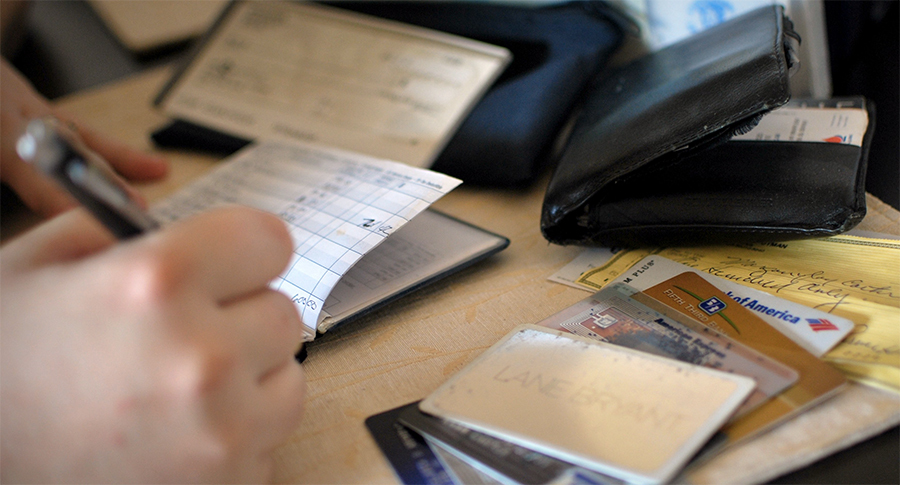Study: One Third Of Americans Have Debt In Collections

(Morgan)
The Urban Institute today released two studies, Debt In America and Delinquent Debt In America, looking at who owes what and where.
Consumer debt, the researchers found, is everywhere — but the distribution is far from even. The average amount of owed debt ranges from $30,000 or lower in some census tracts to $140,000 or higher in others. The two most indebted regions of the country, in general, are the Pacific coast (at $69,831) and the Northeast corridor, from D.C. to Boston (at $68,401).
The researchers note that it’s not surprising that residents of these areas have the highest total debt. Housing costs are highest in cities like San Francisco, New York, and D.C. and mortgages are — predictably — a big component of debt.
70% of the average total debt in the country comes from mortgages, the studies found. Among people with mortgages the average debt is $209,768, but for those without mortgages it’s $11,592. Non-mortgage debt is more evenly spread around the country, with a smaller regional variation.
In general, the study finds, high-debt areas are also high-income areas. If you make more money, you borrow more for your house or your car or your education, and your credit and income together will get you those loans. The correlation makes intuitive sense.
Likewise, there is a far more harmful correlation with the geography of delinquent debt. Debts that have gone to collections are concentrated in lower-income areas of the country, particularly the south and southeast.
However, although the south has the highest rates of accounts in collections, it is far from alone. Even in the area of the country with the lowest number of debts in arrears — New England — just over 25% of the population has at least one debt that has gone to collections. The highest is the West South Central area (Arkansas, Louisiana, Oklahoma, and Texas), with nearly 44% of consumers having a debt in collections.
In the hardest-hit state, Nevada, 47% have a debt in collections. Nevada was also one of the states that faced the worst fallout from the collapse of the housing market and economic crisis that began in 2008. When housing and employment fall apart, it’s going to be a lot harder to pay back your bills.
Nevadans aren’t alone, though. Overall, the studies found, just over 35% of Americans — a third of the country — have a debt that has gone to collections. That’s about 77 million people.
Not all these debts are particularly large. The studies found that the amount varies widely by person, “from less than $25 to more than $125,000.” The average is $5178, and covers everything from old gym memberships to medical debts. Past-due mortgages aren’t included.
Many consumers are not even aware they owe a debt that has gone to collections. Some only find out that they owe anything when they review their credit reports (which can have errors).
Negative debt reports don’t just affect consumers’ ability to borrow more in the future. A bad credit score can also make someone unable to get a job and have other long-lasting effects.
Both studies specifically looked at Americans with credit reports, and so those who are unbanked or otherwise do not participate in the traditional banking and lending system aren’t included. That’s about 9% of the country, or 22 million people, the Urban Institute estimates.
Of course, not all debts are inherently bad. Many of us will want to own a car or a home at some point and a reasonable loan with good terms, repaid on time, isn’t necessarily an evil. Though about 20% of Americans avoid even this, the studies found, and have no outstanding debts at all.
Debt In America (PDF) [Urban Institute]
Delinquent Debt In America (PDF) [Urban Institute]
Want more consumer news? Visit our parent organization, Consumer Reports, for the latest on scams, recalls, and other consumer issues.

